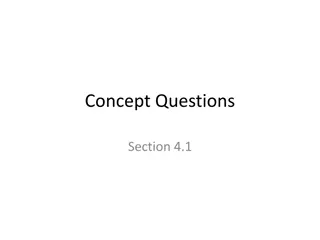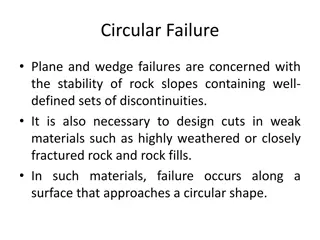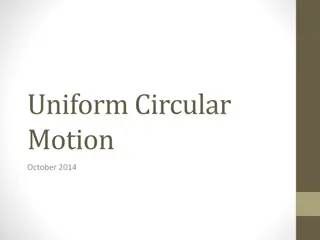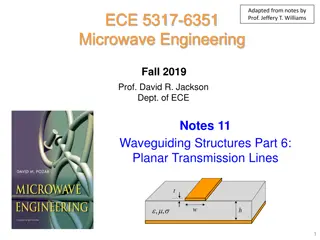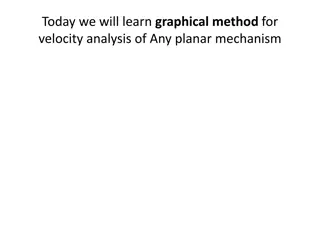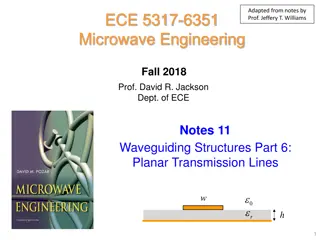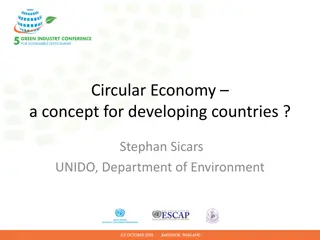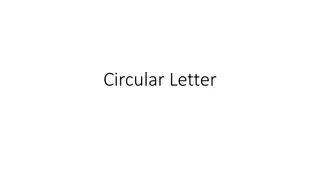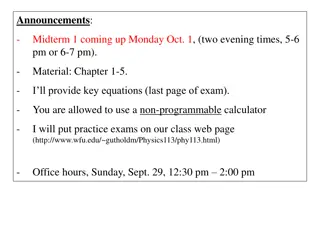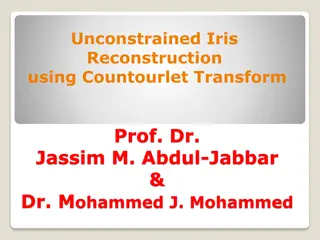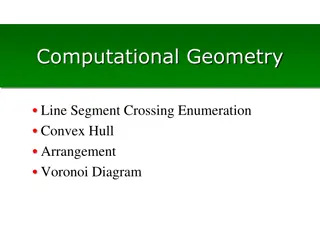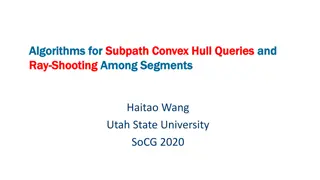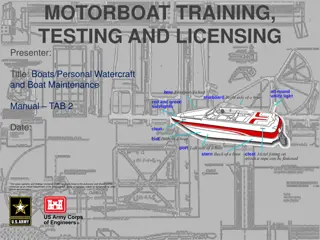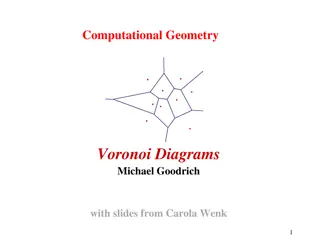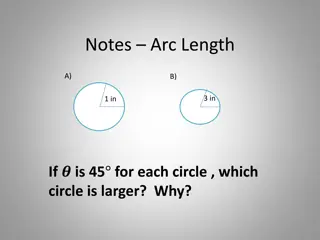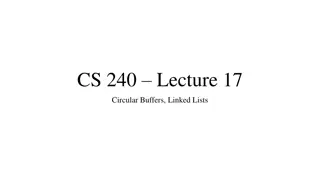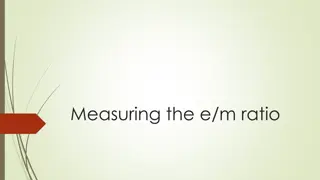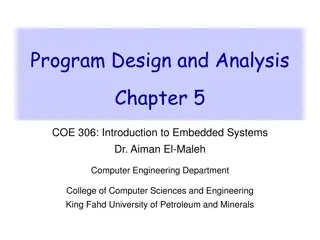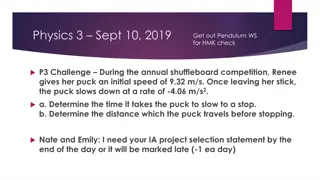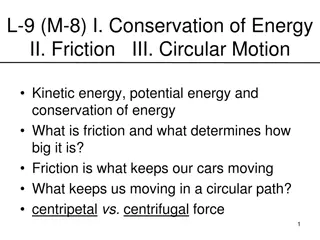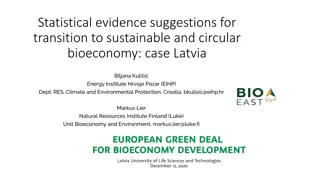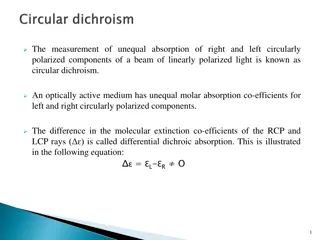Understanding the Planar Two-Center Problem and Circular Hulls
Delve into the Planar Two-Center Problem and Circular Hulls, exploring the concept of finding a pair of congruent disks with the smallest radius to cover a set of points in the plane. Discover the differences between convex hulls and circular hulls, along with efficient methods for computing circular hulls and common tangents.
Uploaded on Sep 22, 2024 | 0 Views
Download Presentation

Please find below an Image/Link to download the presentation.
The content on the website is provided AS IS for your information and personal use only. It may not be sold, licensed, or shared on other websites without obtaining consent from the author. Download presentation by click this link. If you encounter any issues during the download, it is possible that the publisher has removed the file from their server.
E N D
Presentation Transcript
On the Planar Two-Center Problem and Circular Hulls Haitao Wang Utah State University SoCG 2020
2 2- -center problem center problem Input: a set S of n points in the plane Output: a pair of congruent disks of smallest radius that together cover all points of S
Previous work and our result Previous work and our result O(n2log3n) time, Agarwal and Sharir 94 O(n2log3n) time, Katz and Sharir 97 O(n2log3n loglog n) expected time, Eppstein 92 O(n2) time, Jaromczyk and Kowaluk 94 Subquadratic time: O(n log9 n) time, Sharir 97 O(n log2n) expected time, Eppstein 97 O(n log2n log2log n) time, Chan 99 Our result: O(n log2n) time O(n log n loglog n) time if the points of S are in convex position
Circular hulls Circular hulls A circular hull of radius r for a set Q of points is the common intersection of all disks of radius r containing Q It exists iff Q can be covered by a disk of radius r
Properties of circular hulls Properties of circular hulls The circular hull of radius r for Q is dual to the common intersection of all disks of radius r centered at the points of Q Some differences between convex hulls and circular hulls: The circular hull of radius r may not exist An extreme point of Q (e.g., the leftmost point) may not be a vertex of the circular hull
Computing the circular hull Computing the circular hull Previous work O(n log n) time ( -hull), Edelsbrunner, Kirkpatrick, and Seidel, 83 O(n log n) time, Hershberger and Suri, 91 Our result O(n) time after sorting Similar to Graham s scan
Computing the common tangents Computing the common tangents Input: circular hulls of two point sets separated by a line Output: the two common tangents they may not exist Previous work Linear time, Hershberger and Suri, 91 Our result O(log n) time
A dynamic circular hull problem A dynamic circular hull problem Maintain the circular hull of a set Q of points in the plane Insertion: insert a point to the right of all points of the current Q Deletion: delete the leftmost point of the current Q Determine whether the circular hull exists after each update Our result: O(1) amortized time for each update Previous work: O(log n) amortized time for deletions only (arbitrary deletions), Hershberger and Suri, 91
A dynamic circular hull maintenance problem (cont.) A dynamic circular hull maintenance problem (cont.) Points are cyclically sorted around a point
2 2- -center problem center problem Input: a set S of n points in the plane Output: a pair of congruent disks of smallest radius that together cover all points of S r*: the radius of the disks in an optimal solution
Two cases Two cases D1and D2: the two disks in an optimal solution such that the distance of their centers is minimized The distant case: the centers of D1and D2are far away The distance of the centers is r* The nearby case: the centers of D1and D2are very close The distance of the centers is < r* r* r* distant case nearby case
Algorithms for the two cases Algorithms for the two cases Distant case O(n log2n ) time, Eppstein 97 Nearby case O(n log9 n) time, Sharir 97 O(n log n loglog n ) expected time, Eppstein 97 O(n log n) time w.h.p., Chan 99 O(n log2 n log2log n) time, Chan 99 O(n log n loglog n), our result
Our algorithm for the nearby case Our algorithm for the nearby case Parametric search Decision problem: Given a value r, decide whether r r*, i.e., whether it is possible to use a pair of congruent disks of radius r to cover all points
Our algorithm for the nearby case (cont.) Our algorithm for the nearby case (cont.) Follow Chan s algorithm framework Decision problem O(n log n) time, Chan 99 Our result: O(n) time, after O(n log n) preprocessing Optimization problem: a parallel decision algorithm O(log n log2log n) parallel steps with O(n log n) processors, Chan 99 Our result: O(log n loglog n) parallel steps with O(n) processors
Observation Observation D1 and D2: the two disks in an optimal solution of the 2-center problem We can find a point o in the intersection of D1 and D2 The two rays together partition the input point set S into two subsets covered by D1 and D2, respectively r* is equal to the larger radius of the smallest enclosing disks of the two subsets Assume: o is the origin Assume: the x-axis separates the two rays D2 D1 x o
Notation Notation A[i,j]: the radius of the smallest enclosing disk of all points to the left of the two rays B[i,j]: the radius of the smallest enclosing disk of all points to the right of the two rays r* =min0 i, j nmax{A[i,j], B[i,j]} pi+1 pi p2 p1 pn x qn o q1 q2 qj+1 qj
Decision algorithm Decision algorithm pi+1 pi p2 p1 pn qn o q1 Given a value r, decide whether r r*? For each i, find the largest j such that A[i,j] r check whether B[i,j] r How to decide whether A[i,j] r? O(log n) time, Chan 99 Our result: O(1) amortized time (after sorting) q2 qj+1 qj
Decision algorithm Decision algorithm pi+1 pi p2 p1 pn qn o q1 Observation: all elements of A (resp., B) checked in the algorithm form a monotone path The problem reduces to the dynamic circular hull problem O(1) amortized time for each update Time for the decision algorithm: O(n) q2 qj+1 qj
Conclusions Conclusions 2-center problem: O(n log2 n) time distant case: O(n log2n) time nearby case: O(n log n loglog n) time A new result: O(n log n) time, Choi and Ahn (arXiv, June 18, 2020) Open: Does an o(n log2n) algorithm exist? The distant case is the bottleneck Thank you for your attention! Thank you for your attention!







